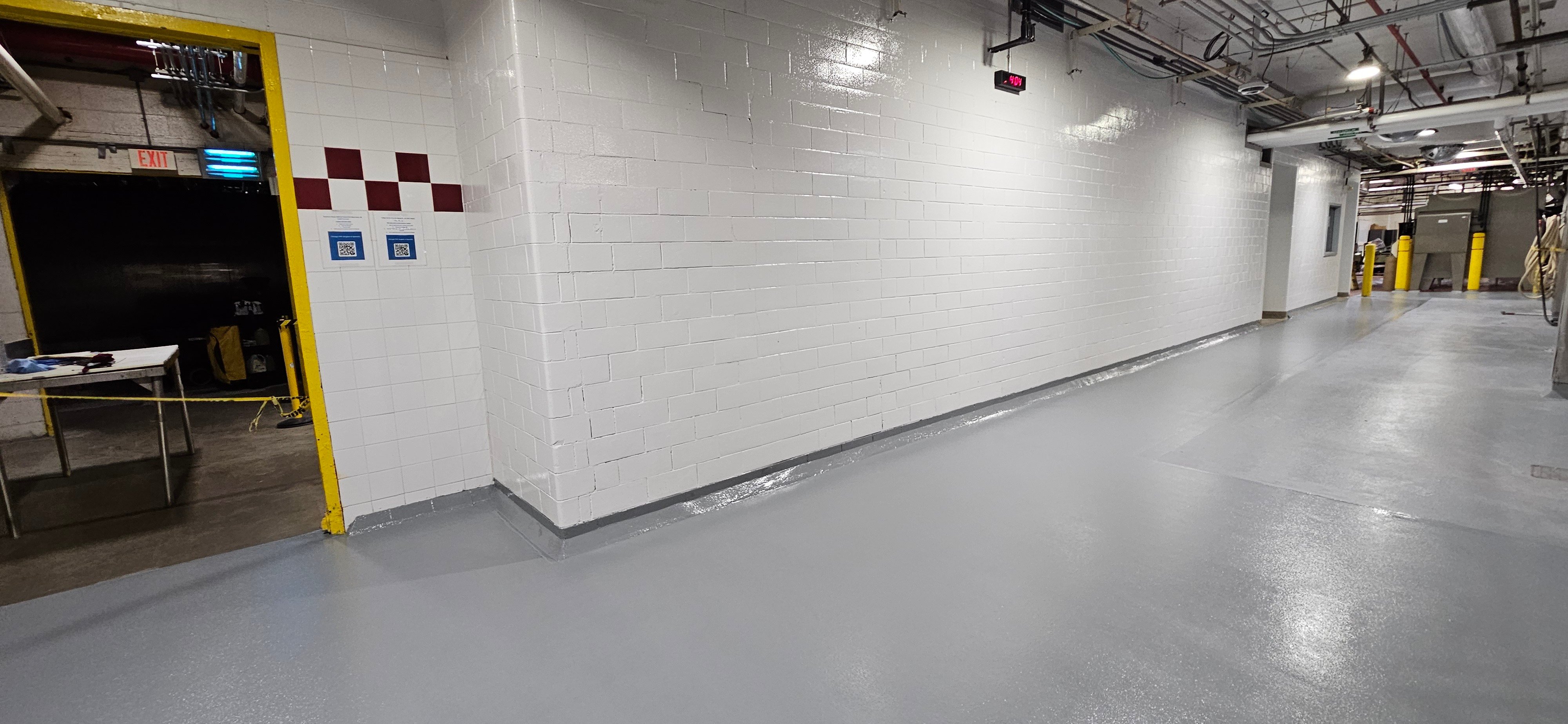
Topics:
October 17th, 2025
3 min read
By Tom Dassie

In the restaurant world, flooring is often an unsung hero. It’s the foundation that supports day-to-day operations, customer experience, and safety. Yet, one common mistake decision-makers make is assuming that a single flooring solution can cover every area of their establishment. The truth is, front of house and back of house spaces have entirely different needs—and the flooring should reflect that.
At CustomCrete, we’ve worked with countless restaurants across Chicago and beyond, helping owners and managers compare flooring types to ensure their front and back of house environments get the durability and look they need.
In this blog, we’ll explore why “one size fits all” doesn’t work for restaurant flooring, what options best suit each space, and how to strike the right balance.
Front of house and back of house areas serve distinct purposes in a restaurant. The flooring you choose should align with the function of each space.
By recognizing these differences, you can create a flooring plan that balances function, aesthetics, and safety.
For front of house, the right flooring creates a welcoming atmosphere and supports the overall dining experience.
Polished concrete offers a modern, sleek look that’s durable and low-maintenance. Its reflective surface brightens dining areas, and it can be customized with dyes or patterns to complement your brand.
Epoxy Coatings
Epoxy flooring can be tailored with solid colors, patterns, or even metallic effects. It’s easy to clean, resistant to stains, and adds a contemporary flair to any dining space. While not as warm as wood or tile, epoxy’s durability makes it a smart long-term choice.
For restaurants that want a more industrial or rustic aesthetic, grind-and-seal flooring enhances the natural look of the concrete while offering protection against stains. It’s cost-effective and quick to install, making it a practical choice during remodels.
Back of house requires flooring built for toughness and hygiene. Safety and compliance are top priorities.
This is the gold standard for BOH areas. Urethane cement resists thermal shock from hot water washdowns, grease, oils, and chemicals. It’s also slip-resistant and seamless, which means fewer places for bacteria to hide—critical in food prep areas.
These systems add texture for slip resistance and provide chemical and abrasion resistance. They’re an excellent option for kitchens and dishwashing stations, where spills and constant cleaning are common.
For storage or utility areas, sealed concrete with a slip-resistant finish may be sufficient. While not as robust as urethane cement, it provides protection at a lower cost.
The challenge for restaurant owners is creating a cohesive flooring strategy that fits both aesthetics and performance. Here are a few tips to bridge the gap:
What is the most slip-resistant flooring option for kitchens?
Urethane cement and epoxy quartz are among the best choices for slip resistance, especially in areas prone to grease or water spills.
Can polished concrete work in the back of house?
Polished concrete is best for front of house due to its aesthetics. In kitchens, it may not perform well against moisture, heat, and chemical exposure.
How long do epoxy or urethane floors last in restaurants?
With proper installation and care, epoxy floors can last 7–10 years, while urethane cement can last 10–20 years, even in demanding environments.
Restaurants don’t succeed with “one size fits all” flooring. By distinguishing the needs of front of house and back of house spaces, you can choose flooring solutions that balance aesthetics, safety, and durability. Whether it’s polished concrete floors for a high-end dining experience or urethane cement in the kitchen for uncompromising durability, the right choice ensures your entire restaurant operates efficiently and looks its best.
Ready to find the right flooring for your restaurant? Request a quote with CustomCrete and let our team help you compare solutions that fit both your front and back of house needs.
Topics: